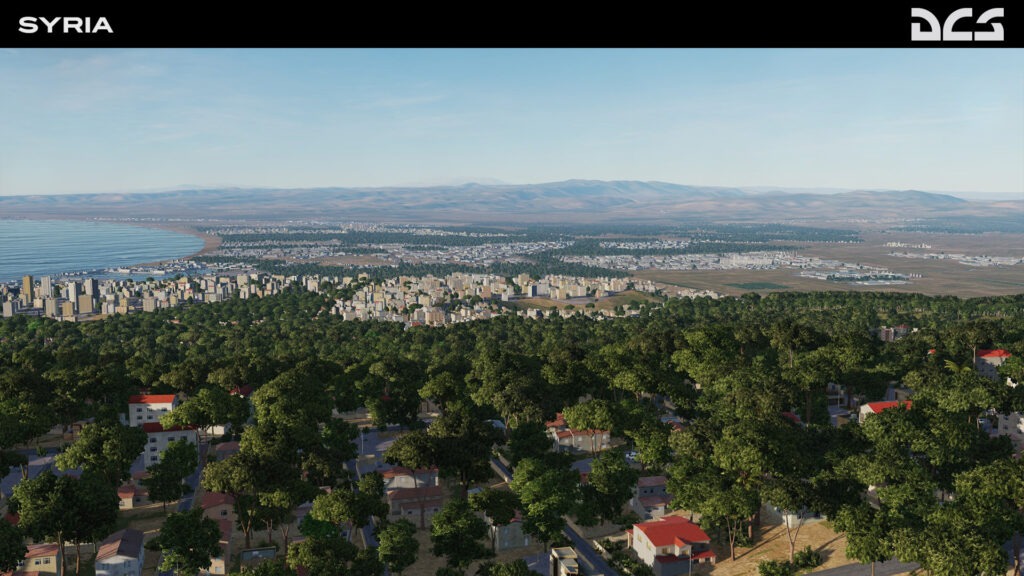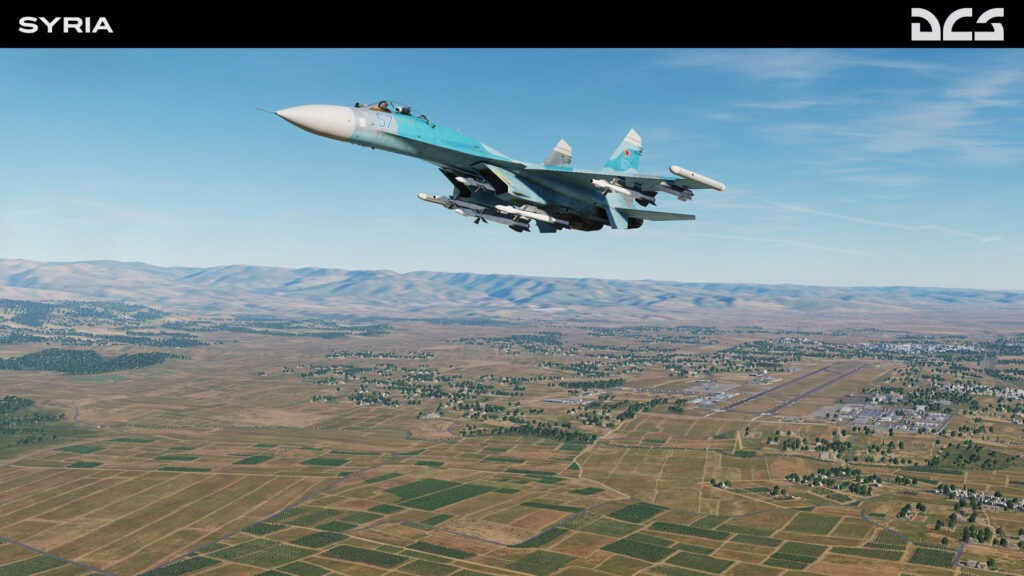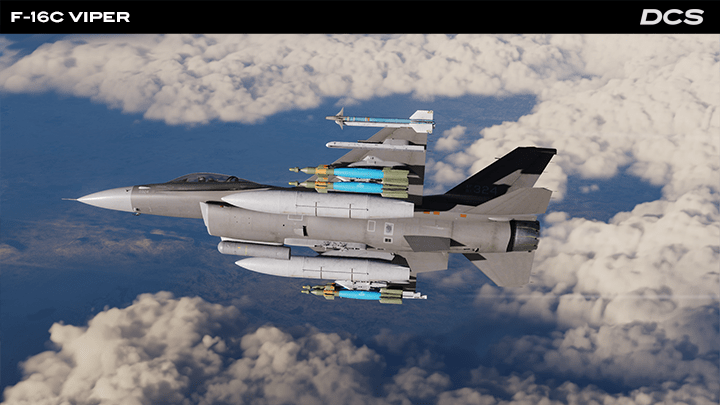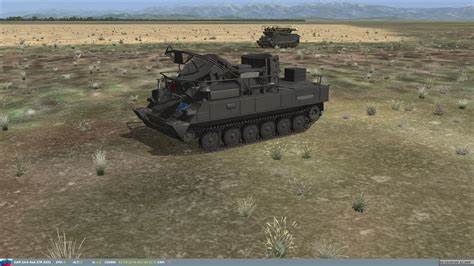Exploring DCS World Update 2.9.9.2280: Syria Map Enhancements, Chinook Updates, and Major Performance Upgrades.
Introduction
With the release of DCS World Update 2.9.9.2280, Eagle Dynamics delivers one of the most comprehensive updates to date. This version goes beyond the usual bug fixes and minor tweaks, introducing major improvements across visual fidelity, new aircraft functionalities, and essential performance upgrades. Key highlights include an enhanced Syria map, upgrades to the iconic Chinook helicopter, and significant optimizations that refine both single-player and multiplayer experiences. In this post, we’ll unpack the specifics of each major feature, so you know what to expect and can make the most of this update.
1. Syria Map Enhancements: A Deeper, More Realistic Experience
Enhanced Visuals and Landscape Adjustments

The Syria map has received a full-scale enhancement, with particular attention to its varied landscapes. New textures, lighting effects, and terrain adjustments bring the map closer to real-life geography. These changes span across densely populated cities, desert plains, and forested regions, each designed to capture the distinct ambiance of the Middle East.
Urban environments now include detailed buildings and landmarks that make low-altitude navigation far more engaging, while coastlines and natural features have been redefined with stunning clarity. One standout improvement is the rework of the day/night cycle lighting, making the transitions smoother and more visually realistic.
Flying at dawn or dusk now involves subtle shifts in ambient light, allowing pilots to experience the beauty and challenges of low-visibility conditions without losing sight of terrain or landmarks. Shadows have also been upgraded, adding more depth to objects and making visual cues clearer for pilots conducting reconnaissance or ground operations.
New Points of Interest (POIs)
DCS has introduced new points of interest across the Syria map, particularly focusing on key military and strategic locations. These include high-detail areas like airfields, military installations, and urban hot spots where conflict often takes place. For example, significant urban hubs and smaller towns have received increased detail, allowing mission designers to add more complex scenarios that blend urban and rural combat.
Each of these POIs adds both visual interest and tactical depth to missions. Whether you’re setting up an airstrike on a fortified location or planning a stealth operation near a well-defended area, these new POIs provide layers of detail that invite unique mission setups and strategic thinking.
DCS World Update Weather and Atmospheric Changes
Eagle Dynamics has refined the weather model within the Syria map, adding dynamic and localized weather that varies by region. Players can experience sandstorms in desert regions, light coastal breezes, or even dense urban fog in cityscapes. These changes aren’t just cosmetic; they affect mission planning, navigation, and combat effectiveness. Pilots must now account for these conditions when choosing flight paths or planning missions, as weather impacts everything from visibility to aircraft performance.

The update also introduces enhanced cloud formations that vary based on altitude and time of day. These clouds interact with lighting, creating dramatic visual effects that change in response to the sun’s position. This dynamic cloud system adds to the immersion, making every flight feel different and adding an extra layer of challenge to aerial combat.
Player Experience and Feedback
The community has widely praised the Syria map updates, with many pilots noting the improvements in immersion and realism. Forum discussions highlight how these changes bring the landscape to life, making missions feel more authentic and intense. From novice players to DCS veterans, feedback emphasizes that the new visuals and POIs add a depth of realism that has revitalized interest in the map.
- Joystick / HOTAS – AMAZON.com
- Rudder Pedals – AMAZON.com
- Throttle Quadrant – AMAZON.com
- Gaming Chair – AMAZON.com
- VR Headset – AMAZON.com
2. Chinook Helicopter Updates: New Features and Flight Dynamics
Model and Cockpit Updates
The iconic Boeing CH-47 Chinook has received several key updates, bringing it closer to its real-world counterpart. The 3D model of the Chinook now includes highly detailed textures, showcasing rivets, panel lines, and wear patterns that reflect the helicopter’s rugged, battle-tested nature. The cockpit has also been revamped with updated instrument displays and improved visibility, making it easier for pilots to monitor critical data without breaking immersion.

In terms of animations, the Chinook’s dual-rotor system has been refined to more accurately represent how it interacts with the air, especially during maneuvers. External animations, like rotor blade flex and landing gear response, make the helicopter look and feel more lifelike, adding depth to takeoffs, landings, and in-air maneuvers.
DCS World Update Flight Dynamics and Handling Adjustments
The update includes significant changes to the Chinook’s flight dynamics, with new physics modeling that adds weight and responsiveness to its handling. The helicopter’s dual-rotor configuration is complex, and the update brings it closer to real-life flight behavior. For example, in hover and ground effect, pilots can feel subtle shifts in stability and responsiveness, making hovering and landing more nuanced.
These adjustments make the Chinook ideal for missions requiring low-speed, precise handling, like troop insertions, supply drops, and medevac operations. However, they also increase the learning curve, so experienced pilots will find new challenges in mastering its updated flight profile.
New Missions and Tactical Roles
To complement these flight dynamics changes, DCS has introduced mission types that highlight the Chinook’s capabilities. Missions now include troop transport, resupply, and medical evacuation roles, leveraging the helicopter’s large capacity and strong lifting power. In dynamic environments, the Chinook’s agility in low-speed and hover modes enables unique mission designs, where players must carefully coordinate landings in tight, dangerous zones or rapidly extract personnel under enemy fire.
These new missions encourage cooperation, particularly in multiplayer settings. Team-based objectives can require multiple Chinooks working in tandem, creating scenarios that challenge players to work together, coordinate actions, and utilize the helicopter’s unique strengths.
3. Core Program and Performance Updates
Optimization for Better Frame Rates
With version 2.9.9.2280, DCS World has introduced extensive performance optimizations, targeting smoother gameplay on a wide range of systems. Players with high-end systems, as well as those with mid-range PCs, should see noticeable improvements in frame rates and stability.

One of the key updates involves improved memory management, which reduces loading times and mitigates memory-intensive tasks that could previously cause frame drops. This change benefits all players, especially those running high-texture maps like Syria, as they can now enjoy the high-resolution visuals without significant performance compromises.
Multi-Threading and CPU Load Management
The introduction of multi-threading has been a major focus for Eagle Dynamics, and this update brings further refinements. By distributing the game’s workload across multiple CPU cores, DCS World can better manage complex scenes and heavy AI activity. This optimization significantly boosts performance, especially during intense combat scenarios or large multiplayer engagements, where CPU usage was previously a bottleneck.
The multi-threading improvements are particularly beneficial for VR users, where smoother frame rates contribute to reduced motion sickness and a more immersive experience. VR pilots should experience fewer stutters and a more stable frame rate, enhancing realism and control precision during high-intensity flights.
Graphics Settings and Visual Fidelity
To make the best use of these optimizations, DCS World has added new graphics settings that give players more control over performance and visual fidelity. These include updated options for shadow quality, view distance, and environmental details. High-spec users can push their systems to achieve breathtaking visuals, while lower-spec users can adjust settings to strike a balance between performance and clarity.
For VR users, the update also introduces optimized settings that help maintain high visual quality without the heavy processing demands, allowing them to enjoy clearer displays and less graphical distortion at high speeds or sharp turns.
4. Additional Aircraft, Vehicles, and Asset Updates

AI Improvements and Enhanced Ground Units
The AI for both aerial and ground units has been improved, with updates that refine how AI reacts in urban and close-quarters combat. Ground units are now more responsive to cover and take advantage of urban structures for defense, creating more realistic engagements for players who enjoy combined arms missions. This is particularly relevant for the Syria map, where dense cities provide numerous tactical challenges and opportunities.
New assets, including vehicles and defensive emplacements, have been added to expand mission design options. These additions give mission creators more tools to simulate realistic scenarios, where convoys, defensive outposts, and anti-aircraft emplacements enhance gameplay.
Compatibility with New Aircraft Modules
DCS has ensured that new and legacy aircraft modules remain compatible with the latest version. The update provides stability patches and performance tweaks for popular modules like the F-18 Hornet and the A-10 Warthog, making sure they run smoothly with the new features in 2.9.9.2280. For players using the latest high-fidelity modules, this compatibility is crucial for maintaining immersion and preventing disruptions during missions.
5. Other Notable Features and Quality-of-Life Improvements
UI and HUD Enhancements
In response to community feedback, DCS has refined its UI and HUD to improve clarity and accessibility. The HUD’s readability has been enhanced, with more options for customizing elements like brightness and contrast. Additionally, the mission editor has been updated with a more intuitive interface, making it easier for new players to create custom scenarios without feeling overwhelmed.
- Latest CPU’s Available Now – Amazon.com
- Get a NEW GPU Best Performance – AMAZON.com
- Upgrade RAM Here today – AMAZON.com
- Prebuilt PC Options – AMAZON.com
DCS World Update Sound and Environmental Audio Updates

The update also brings substantial changes to environmental audio. Aircraft engines have received new sounds that better reflect engine RPMs and throttle changes, adding auditory cues for pilots managing power. Additionally, the ambient sounds now adjust based on location, so players will hear unique soundscapes depending.
Look Forward to Further DCS World Updates as they Roll Out!
Author
Brendon McAliece (Aka Gunnie) is a a military veteran with 23 years working on Jet Fighters, their weapons systems and ejection seat/module systems as well as munitions and R&D. Involved with flight simulation since the 1980s, he has flown all the major flight simulators over the years.
He is an Australian expat who has lived in Malaysia, UK, Saudi Arabia and more recently Thailand. He is a multi-lingual blogger who loves to share his life experiences here on LetsFlyVFR.com and DreamingGuitar.com, with his lifestyle and Travel experiences Blog plus his Dreaming Coffee website.
Learn More @ DreamingGuitar.com – DreamingCoffee.com – LetsFlyVFR.com
( HOME – BLOG – SHOP – ABOUT )
As an Amazon affiliate I may benefit from qualifying sales.
